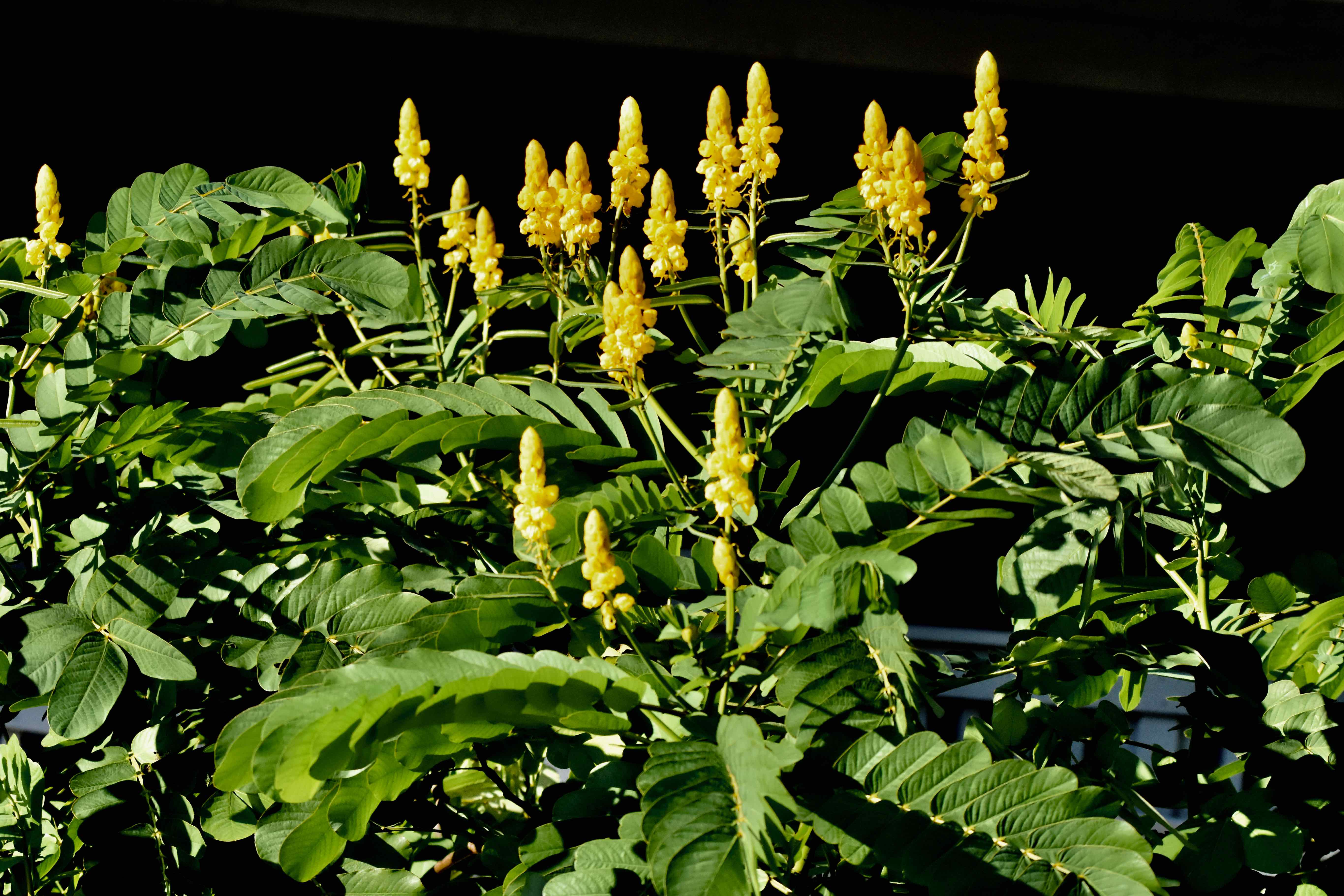
Candlebush, photographed at Okeeheelee Nature Center, West Palm Beach, Palm Beach County, in May 2017.
We see candlebush, Senna alata, mostly as a landscaping plant, a brightly bloomed addition to a butterfly garden. In parts of the world, it's a medicine cabinet.
Candlebush is a large shrub or small tree native to southern Mexico, Central America and South America that's managed to grab a foothold in the wilds of Florida and a handful of other states. In some parts of the world where it's been imported, candlebush has become an invasive pest but not so much here, where it's rarely found growing in the wild. It's more likely to be encountered in a butterfly garden of a nature center than trailside in the backcountry. It is host to the larvae of the sleepy orange, cloudless sulphur and orange-barred sulphur butterflies.
The source of the name is self evident — large, vertical spikes (racemes, technically) of brilliant yellow flowers that resemble candles. They even have a waxy feel to them. In Florida, candlebush is seen mainly as a shrub perhaps six to 10 feet high, but on its home turf it can be a small tree growing to 30 feet or more, with a four-inch trunk. It has massive compound leaves that can be 30 inches long, with seven to 14 pairs of leaflets.
In South Florida, candlebush blooms April through November. The flowers produce large, winged pods that extend out horizontally from the spike and turn dark brown or black when mature. Each pod can have 50 to 60 seeds, and when they open, the next generation of candlebush drops to the ground. So it can be on the weedy side, with so many sprouts. It grows rapidly: it can go from seed to six feet tall in the span of a single season. In places to our north, it can be grown effectively as an annual. It can withstand cold to about 20 degrees; colder temperatures will kill it, but the seeds will sprout back the next season.
In its native range, candlebush grows in moist places where there is full sun, including river banks, forests and forest edges, ravines and disturbed areas like pastures and roadsides. In places where it's considered invasive, it will form dense thickets that crowd out native plants. Its thick canopy also blocks out sunlight. In pastures, it's a particular problem because it's toxic. It's known to kill goats that eat the leaves. It's widely spread throughout the Pacific, where it's considered invasive in Hawaii, Hong Kong and Austrailia. It's a difficult plant to remove because it sends out suckers.
Candlebush is the source of many medicines. In some places, it's known as ringworm cassia, because of its antifungal properties. It's also known to have antibiotic properties, effective on the skin against gram positive bacteria. In parts of South America, the leaves are eaten as a laxative. It's used to treat worms, diarrhea, gynecological problems, liver problems and to purify the blood. In Africa, it's used for stomach pain during pregnancy, hemorrhoids, blood in the urine, convulsions, heart failure and more. In India, it's used as a mouthwash, to treat bronchitis and liver problems. In places, the leaves are toasted to make coffee.
Other common names include, candlestick plant, candlestick senna, ringworm cassia, candlestick, Christmas candle, emperor's candlestick, empress candle plant, candalabra plant, candalabra bush and candletree. It is a member of Fabaceae, the pea family.
Okeeheelee Nature Center
Click on photo for larger image
U.S. Department of Agriculture Distribution Maps






